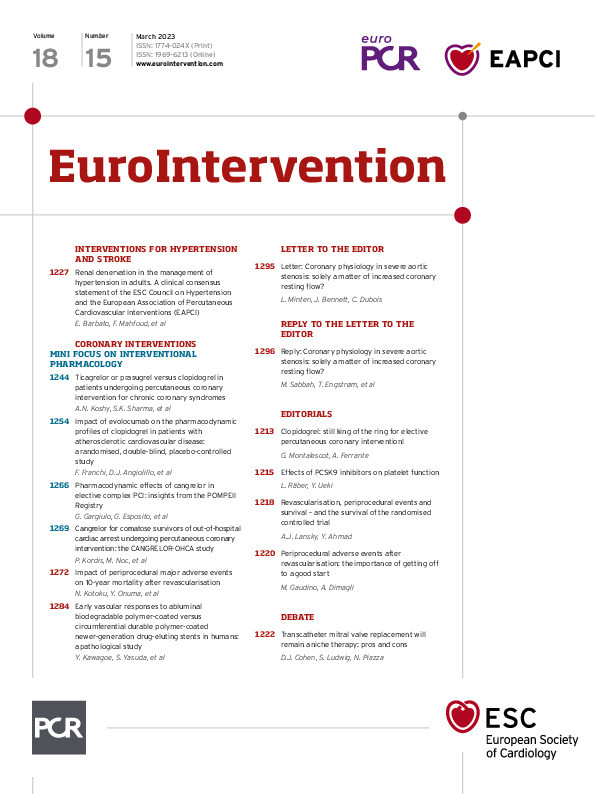We acknowledge that one should be cautious with firm conclusions on resting flow based on measured transit times. However, the finding of a statistically significant increase in coronary flow reserve, combined with a highly significant increase in serial measurements of transit time and a non-significant increase in absolute hyperaemic flow, strongly suggests that resting flow did indeed change and is the major reason for the improved coronary flow reserve. Having stated that, we agree that the trend of increased hyperaemic flow and decreased minimal microvascular resistance may in fact be real phenomena, at least for some patients, as evidenced by the patient level changes shown in Figure 1 of the paper.
The index of hyperaemic flow to left ventricular mass increased by 39% (p<0.001), as reported in the text, while mass-indexed resistance was reduced by 30% (p<0.001, not reported in the original paper). Because of variation in the proportion of the myocardium subtended by the left anterior descending artery, we only reported the relative change in indexed flow and resistance – under the assumption that the proportion of myocardium subtended remained constant before and after regression of left ventricular hypertrophy in the individual patient.
The correlation between left ventricular stroke work and absolute resting flow would most likely have been stronger than the reported correlation using transit mean time – we agree.
We have now demonstrated in two separate cohorts of patients with severe aortic stenosis that hyperaemic flow is stable after aortic valve replacement34. Although these are the largest cohorts to date with long-term repeated invasive measurements, they are small in absolute terms. The final verdict may, therefore, be contingent on data from a larger sample. The obvious challenge, as recognised by Dr Minten et al, lies in the repeated invasive assessment of these patients. We look forward to the results of their ongoing study which aims to include 100 patients5.
Acknowledgements
This work is supported by the BRIDGE - Translational Excellence Programme (bridge.ku.dk) at the Faculty of Health and Medical Sciences, University of Copenhagen.
Funding
This work was supported by the Novo Nordisk Foundation (grant agreement numbers: NNF18SA0034956 and NNF20SA0064340).
Conflict of interest statement
The authors have no conflicts of interest to declare.

